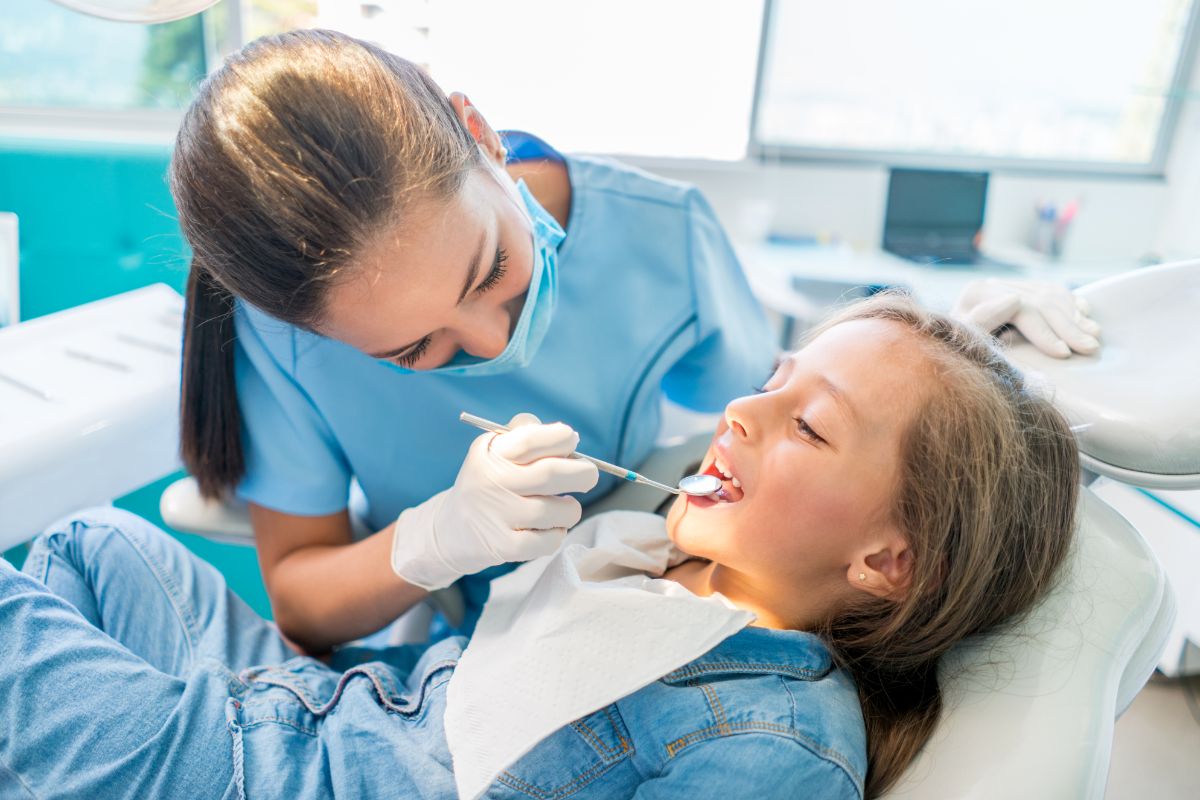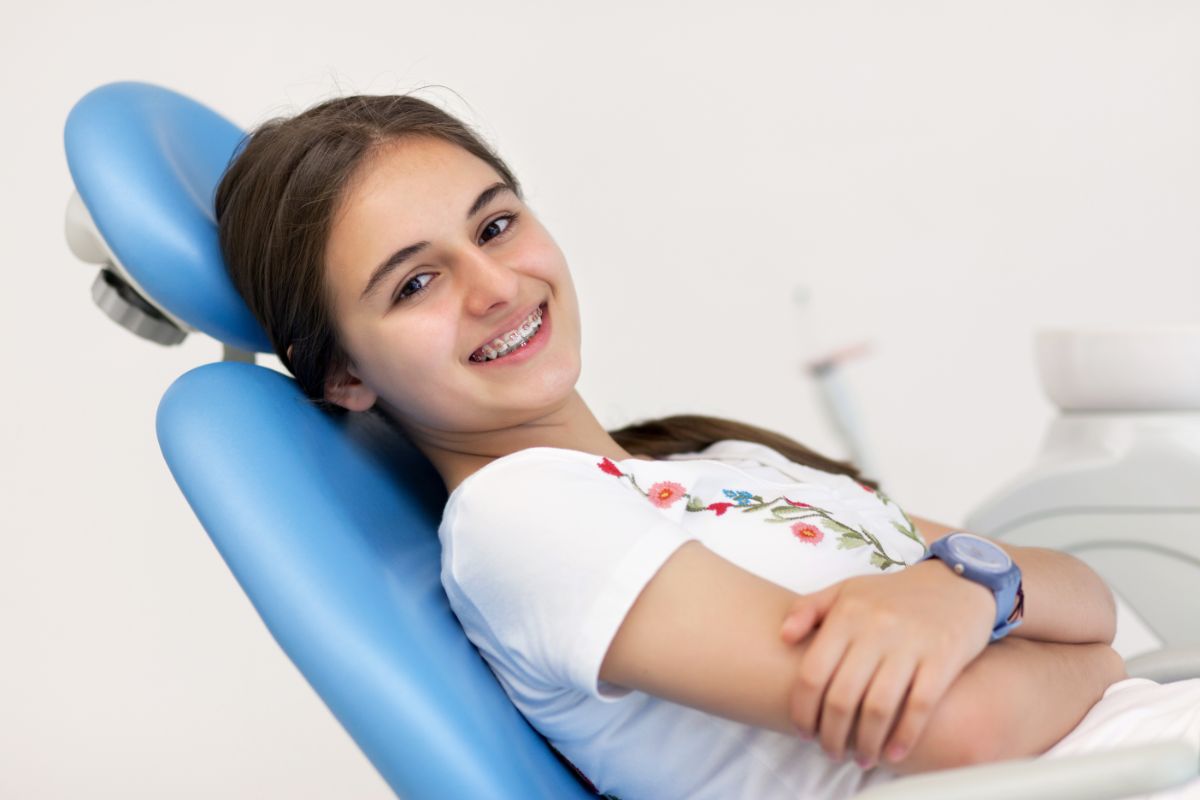For better or worse, we form habits at young ages that stay with us for the rest of our lives. That includes habits surrounding oral hygiene! This is one reason it’s essential to teach your child good oral health habits so they can enjoy a lifetime of happy, healthy smiles! Bad oral habits are a common cause of poor dental health in children and make it difficult for your child to function at school and home. Leaving the issues unaddressed can lead to cosmetic or structural damage to their teeth. At First Class Smiles, you can find out how to keep your child’s smile healthy from the start.
Many parents want to help their child break their bad dental habits but aren’t sure where to begin. Educating them on how these habits can impact their teeth and minor behavior modification is a good start, but severe cases may require dental intervention. Here at First Class Smiles, we’re all about helping your child achieve a healthy, functional, and beautiful smile. Read on to learn more about keeping your child’s smile happy and healthy!
Teach them a healthy oral hygiene routine
The most important piece of advice we can give is pretty simple: get your child in the habit of caring for their teeth! By doing so at an early age, you can teach them the importance of a healthy smile and make it a part of their daily routine!
These basic oral health guidelines will help your child maintain clean teeth and a healthy mouth:
- Brush at least three times a day, ideally after each meal and once before bed.
- Use fluoride toothpaste and a toothbrush with soft bristles.
- Brush gently at a 45-degree angle toward the gum line, moving the toothbrush in a circular pattern across the teeth to effectively remove bacteria and any trapped food particles.
- Floss at least once per day to remove bacteria and any food accumulated throughout the day.
- Replace their toothbrush every 3-4 months, or sooner if you have a cold or other illness.
- Use antimicrobial and fluoride mouthwashes to help further improve their oral health.
If your child is wearing braces, clear aligners, or another orthodontic appliance, take the time to make sure that they fully understand how to clean them thoroughly. Not only can most orthodontic treatments increase their risk of dental issues, but tooth decay, receding gums, and other such problems can increase their treatment times and may impact their results.
If your child is wearing braces, we recommend:
- brushing around every part of their braces
- brushing every surface of every tooth
- brushing until their brackets are clean and shiny
- flossing every night before they go to bed
- using tools like floss threaders and Waterpiks to clean hard-to-reach areas
If your child wears clear aligners, they should follow the same basic guidelines for dental hygiene, but they’ll also need to care for their aligners. Remind them to always rinse the aligners before putting them in their mouth and clean them well with soap and water at least twice a day.

Give them the right tools for the job
When thinking about improving your child’s dental hygiene routine, you should always start with the basics. The state of their toothbrush is a great example. Many people think that firmer bristles are better at cleaning the teeth, but this isn’t true! Firm-bristled toothbrushes can irritate your child’s gums and may lead to sensitive teeth. For extra comfort and better results, choose a soft-bristled toothbrush instead, and be sure they use gentle, circular strokes to clean the teeth and gums.
Did you know that you should replace your child’s toothbrush (and your own) every 3-4 months? All toothbrushes, both manual and electric, have a limited lifespan. Regular use wears down bristles and makes the toothbrush less effective over time. Most toothbrushes have indicators to help you tell when they need to be replaced. Look for a soft-bristled toothbrush, as these get the job done as well as firmer bristles while being gentler on your teeth and gums.
As far as brushing goes, look for toothpaste with the American Dental Association (ADA) seal to verify that it is safe and effective for your child. The ADA seal ensures that a particular toothpaste has been objectively tested and approved as safe by the ADA Council on Scientific Affairs. Their seal of approval is usually located on the toothpaste box and tube and can help you ensure that your child is using toothpaste that’s safe for their mouth.
It’s important to choose an age-appropriate toothpaste for your child. Some toothpaste designed for adults consists of harsh ingredients that may erode and wear away their tooth enamel, the protective outer coating of the teeth. Although abrasives are excellent for polishing and removing plaque from adults’ teeth, the large amounts of phosphates and alumina found in certain toothpaste can be too strong for a young child’s enamel and may cause their teeth to become overly sensitive. Our doctors and team would be happy to recommend age-appropriate toothpaste that will be the most beneficial for your child’s smile!
The ADA recommends that children of all ages use toothpaste that contains fluoride to protect their teeth against plaque buildup and cavities. It’s important, however, to keep an eye on the amount of fluoridated toothpaste that your child is consuming, especially in younger children.
The advised amount for kids three and under is just a “smear” of toothpaste, while a pea-sized amount is recommended for older children. Children under two are typically unable to spit out their toothpaste, so we generally suggest using a toothpaste without fluoride until they are old enough to do so reliably.
Finally, the flavor of toothpaste isn’t relevant to how effective it is at maintaining dental health, but choosing a toothpaste that tastes good will undoubtedly make a difference in how excited your child is about brushing their teeth! Many children dislike toothpaste with a more traditional mint or spearmint flavor because it can be too “spicy” for them and makes their mouth tingle.
Kids tend to be much more willing to consistently brush their teeth when you offer them toothpaste flavors that are a little more fun, such as strawberry or bubblegum. Finding a taste of toothpaste your child can get excited about will encourage them to create the kind of good dental hygiene habits that will last a lifetime.
Limit their sugar intake
A balanced diet can help decrease a child’s risk of developing cavities by providing them with the vitamins and nutrients they need to develop healthy, cavity-resistant teeth. Parents should limit sugar-heavy foods, juices, and candy that erode enamel and leave harmful bacteria. A liquid medicine or gummy vitamins that have been sweetened can be an issue as well. If a child is allowed one of these as a treat or needs medication, they should be encouraged to brush their teeth and rinse well afterward to wash away the sugar.
The above is easy enough to manage when you’re in charge of the menu, but when kids are in school or someone else’s care, monitoring what they are eating can be more challenging. This is especially true if your child prefers to buy their lunch rather than take a packed one. If this is the case with your child, check the school menu ahead of time, so you’ll know what options are available.
Read the menu with your child and discuss how important it is to make healthy food choices such as whole grains, raw veggies, milk, cheese, yogurt, and fruit. And don’t forget about after-school snacks! Be sure to have plenty of delicious, mouth-healthy items stocked in the kitchen ahead of time.
Schedule regular dental checkups
As children grow, parents should schedule routine dental checkups about every six months, depending on what our dentists recommend for your child. We will complete an oral examination at each of these checkups, clean your child’s teeth thoroughly, and apply fluoride. Not only will this help your child’s mouth stay healthy, but it will help us initiate a positive relationship with our young patients.
These regular visits allow us to build a rapport with children, and we can use this time to reiterate the importance of maintaining an excellent oral hygiene routine at home. Regular checkups and good dental hygiene can help prevent cavities and the need for dental work in the future and reduce dental anxiety down the line.

Give your child a lifetime of smiles with First Class Smiles!
Dental visits with the expert doctors at First Class Smiles should start when your child’s first tooth erupts and no later than their first birthday. These visits allow us to monitor your child’s dental development and treat any potential problems as they arise. Early and regular visits also give your child the chance to become familiar with our office and our staff, so they can look forward to visits as an important and exciting part of dental care as they get older.
A child’s first dental visit is usually pretty quick and will involve little to no treatment. You will complete medical and health forms, and we will take the dental and medical history of the child. After a comprehensive examination, our dentists will sit with parents and discuss topics such as:
- good oral hygiene practices for healthy teeth and cavity prevention
- fluoride needs
- oral habits, such as thumb sucking, tongue thrusting, and lip sucking
- developmental milestones and potential issues
- teething
- proper nutrition
- the scheduling of dental checkups
Our dentists will check your child’s teeth for decay during the examination, examine their bite, and look for any potential problems with the gums, jaw, and oral tissues.
Are you ready to help your child take the first step in a lifetime of healthy smiles? Get in touch with our Des Plaines office to schedule your child’s first visit!

